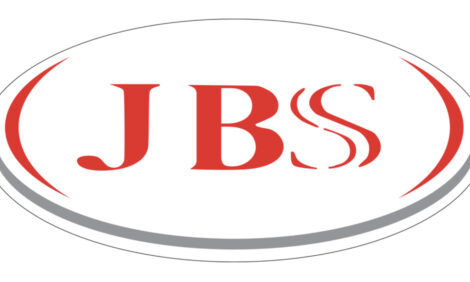



In The Cattle Markets
US - A weekly review of the cattle market by Tim Petry, Livestock Economist, North Dakota State University Extension Service.Northern Plains Perspective on US Cattle Inventory
Many areas in the Northern Plains cattle producing region suffered with drought issues during much of the past decade. Therefore, forced liquidation of beef cow herds occurred. Although normal moisture conditions returned to most of the Northern Plains in 2009, beef cow liquidation was still higher than the national average. The USDA cattle inventory report indicated beef cows in the US on January 1 were down 1.5 per cent from the previous year. But beef cow numbers were reported to be down 2 per cent in Montana, 3 per cent in North Dakota and Wyoming, and 4 per cent in Nebraska with South Dakota declining only slightly. Beef replacement heifers were also down more than the US average of 1.7 per cent. Replacements declined over 3 per cent in NE and WY, with 8 per cent and 11.7 per cent declines reported in ND and MT.
There are likely several reasons why additional liquidation in the Northern Plains occurred. Many farms and ranches produce both crops and cattle and the higher crop prices compared to cattle prices generated more interest in producing crops. A number of producers have relatively small beef cow herds and were at the age when they decided to reduce their workload. The return to more normal precipitation brought a much harsher winter to the Northern Plains in 2008-2009, with some forced liquidation of herds due to blocked roads, inability to access feed supplies, and even collapsed barns. And early spring blizzards and record flooding in some areas caused above normal calf and cow mortality, and cases where cattle feed yards were inundated with flood water.
In contrast, both the number of feeder cattle outside feedlots and cattle on feed in the Northern Plains were generally above average US levels on January 1. Steers over 500 pounds were up about 6 per cent in ND and Wyoming, and up by almost 12 per cent in SD compared to a decline of 2 per cent in the US. Heifers over 500 lbs were up 2 per cent in ND, over 10 per cent in SD, and 21 per cent in MT compared to a less than 1 per cent increase in the US Cattle on Feed numbers were about the same as last year in Nebraska, but up 2.6 per cent in SD, and up 29 per cent in ND compared to a 1 per cent decline in the US.
The increased number of feeder cattle still in the Northern Plains was due to the reduced sales volume that occurred throughout the fall marketing season. Mild weather and good forage conditions resulted in many calves being weaned a month later than last year, when winter set in early and drought in the western part of the region limited forage availability. Cattle operations that graze cows on corn stalks after weaning the calves had to wait to wean because corn harvest was late. By January, only 73 per cent of the corn had been harvested in ND. Ample forage supplies, a large feed barley crop, lots of high moisture corn and low calf prices encouraged cattle backgrounding and cattle feeding.
With corn prices moderating somewhat, good moisture conditions in the Northern Plains, and a chance for higher cattle prices when the economy improves, there may be interest in retaining more beef heifers in 2010. Replacement quality heifers are commanding premium prices at many Northern Plains cattle auction markets. For example, several lots of replacement heifers sold for the same prices as their steer counterparts last week, and in a few cases even brought substantial premiums to the steers.
The Markets
Even though the choice boxed beef price remained stagnant at $139.32, down 2 cents from the previous week, fed cattle prices showed nice improvement. Select boxed beef gained 60 cents for the week so the choice-select spread narrowed to $1.87. The 5-area live weight fed steer price gained $2.74 to $88.41, and the dressed weight price increased $3.51 to $140.18, the highest prices recorded since April 2009. Feeder cattle prices also advanced as light receipts due to winter storms were prevalent over much of the country. Cattle that were able to make it to market found strong demand, particularly from areas where the moisture will enhance spring and summer grazing potential. 500-600 lb. feeder steers increased over $2 in Nebraska, over $3 in Montana, and almost $8 in Oklahoma. The 7-800 weight steers increased over $3 in both Nebraska and Oklahoma. Corn prices in Omaha on Thursday increased 14 cents a bushel for the week, but DGS prices were weaker.
|
Data Source: USDA AMS Market News
|
Week of
02/12/10 |
Week of
02/05/10 |
Week of
02/13/09 |
|
|---|---|---|---|---|
| 5-Area Fed Steer | all grades, live weight, $/cwt | $88.41 | $85.67 | $82.20 |
| all grades, dressed weight, $/cwt | $140.18 | $136.67 | $131.05 | |
| Boxed Beef | Choice Price, 600-900 lb., $/cwt | $139.32 | $139.34 | $136.33 |
| Choice-Select Spread, $/cwt | $1.87 | $2.49 | $1.52 | |
| 700-800 lb. Feeder Steer Price | Montana 3-market average, $/cwt | $98.86 | $98.14 | $94.15 |
| Nebraska 7-market average, $/cwt | $103.07 | $99.77 | $96.74 | |
| Oklahoma 8-market average, $/cwt | $98.03 | $94.96 | $95.66 | |
| 500-600 lb. Feeder Steer Price | Montana 3-market average, $/cwt | $122.67 | $119.07 | $112.49 |
| Nebraska 7-market average, $/cwt | $120.69 | $118.37 | $115.84 | |
| Oklahoma 8-market average, $/cwt | $111.31 | $103.54 | $108.09 | |
| Feed Grains | Corn, Omaha, NE, $/bu (Thursday) | $3.51 | $3.37 | $3.55 |
| DDGS Price, Nebraska, $/ton | $105.00 | $106.30 | $139.00 | |
| WDGS Price, Nebraska, $/ton | $39.90 | $40.50 | $46.75 | |
TheCattleSite News Desk


